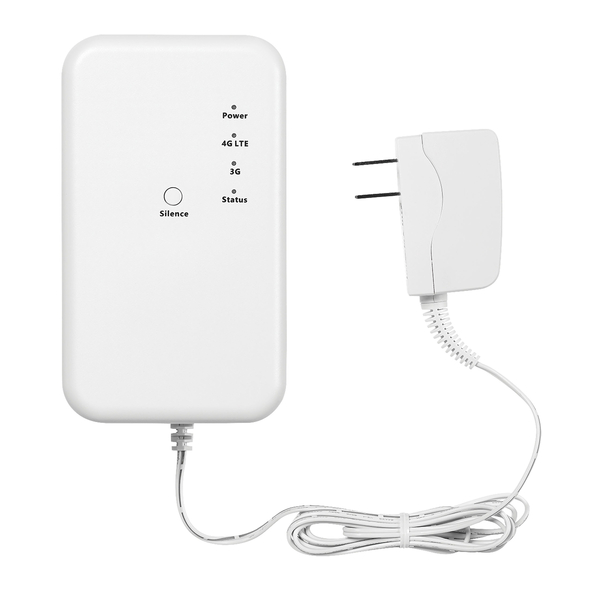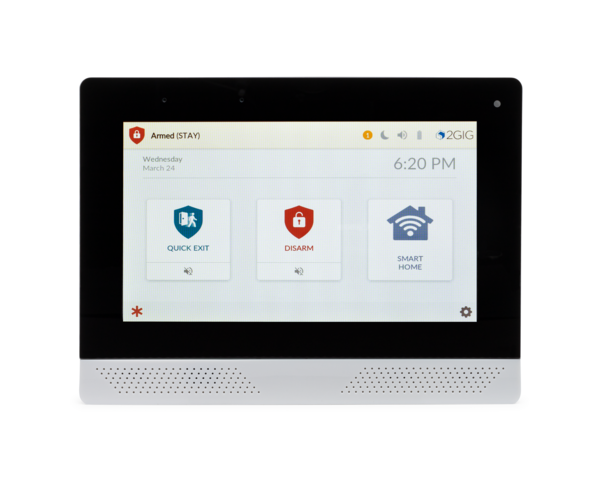Update March 16, Post Outage: Alarm Grid has confirmed that the Lyric and Pro Series panels are not uploading Disarm photos to TC2 in the wake of the recent service outage. We can't be sure these two issues are related, but the customers we've spoken to indicate that this feature was working prior to the outage. The issue has been reported to Resideo.
Since the restoral: We have noticed that some panels with WIFI, such as the Lynx Touch panels, are not automatically reconnecting to WIFI. If this happens to you try a panel reboot. If that doesn't fix the problem, then go back through WIFI settings and rejoin the network.
9:18 pm Update: Our testing indicates that Total Connect 2.0 is fully restored. We've confirmed that both iOS and Android devices are now able to connect. Resideo has confirmed that Total Connect 2.0 is restored as well.
Dear Valued Customer,
Subject: The following AlarmNet Services are now Restored
Alarm Delivery/Signaling
AN360
Total Connect
Alarm Delivery/Signaling
Date:3/14/22
Restored Time:2:40 PM ET
AN360
Date: 3/14/22
Time: 2:40 PM ET
Total Connect
Date: 3/14/22
Restored Time: 7:30 PM ET
Thank you for your patience.
7:40 pm Update: It's unofficial, but it appears the TC2 website is now accessible. In addition, when logging in through the iOS App, Activity appears to now be logging correctly again. Now, when I bypass a sensor, then arm, TC2 and the panel status match. When I look in Activity, the proper events are showing up. What I see when I log into the webpage matches what I see in the app.
5:00 pm Update: Total Connect 2.0 Text notifications are beginning to be processed. Earlier in the day, only push notifications were coming through. In these notifications, you are likely to see some older events as the queued events are processed by the server.
The Total Connect 2.0 Website, it appears, is still unavailable. To our knowledge, Android users are still not able to log in via the app. Users on the iOS platform can log in, but TC2 seems to be having trouble knowing whether a command is processed or not. I was able to bypass a zone and arm my system successfully (I can tell because I'm sitting next to it) but TC2 thought the arming command failed, and showed my system disarmed.
Resideo put up an official notice on the AlarmNet360 site. It states:
IMPAIRED
Alarm Delivery and AN360 Restored / Total Connect is still impaired
Start:2022-03-13 07:00 PM
End: N/A
Dear Valued Customer,
Subject: The following AlarmNet Services are now Restored
Alarm Delivery/Signaling
AN360
Alarm Delivery/Signaling
Date: 3/14/22
Restored Time: 2:40 PM ET
AN360
Date: 3/14/22
Restored Time: 2:40 PM ET
2:00 pm Update: AlarmNet360 is now up and functioning. This means our ability to create new accounts and remotely troubleshoot existing accounts is restored. There could still be a few hiccups, so please be patient.
Total Connect 2.0 is still accessible via iOS device, but not via the website. Some activity and notifications have begun to come through via iOS. As far as we know, Android users are still unable to log into TC2 at all.
Please Note: As the service begins to come back up, there may be some events that TC2 has had queued since the service went down. When the connection is restored, you may receive some notifications for events that actually happened at an earlier time.
1:00 pm Update: To our knowledge, AlarmNet customers' alarm signals are being delivered, and have been since about 3:00 am this morning. We've done some signal testing, and currently our signals are coming through.
The AlarmNet360 website and the mobile app are still down. It is not currently possible to log in there.
Total Connect 2.0 appears to be partly up. You can log in through iOS devices and execute some commands, but the Activity Log appears not to be working, at least not with consistency. Android users of the App report they are still unable to log into Total Connect 2.0. If you have news to report on your status, you can do so in the comments below.
UPDATE 12:42 pm: If you have silenced your system after receiving an error message about a comm failure or other outage-related message, such as communication path failure, the system should not sound again unless the condition restores, then occurs again. In that case, it will sound again because the system sees it as a new event that it needs to make you aware of.
The website listed above, status.resideo.com is the site for Resideo Total Connect Comfort (thermostats). Though this isn't a site specifically for Total Connect 2.0, the issues seem to be mirroring one another, so it's a reasonable site to check for progress. Honeywell Home is not the same thing as Total Connect 2.0.
Original Post: Alarm Grid has received information that Total Connect 2.0, a service of AlarmNet, is currently down. During this outage, you will be unable to log into your Total Connect 2.0 account, and you will likely see an error, and hear beeping, from your system.
To silence the beeping, simply disarm your system twice, or if you have a touchscreen, acknowledge the error by entering your normal arm/disarm code when prompted. Once the error is silenced, it should not sound again*, though it will continue to display on the keypad until the issue is resolved. Once the problem is resolved, another disarm (or two) may be required. You can check the status of this outage at status.resideo.com.
This outage has also affected the ability of the system to deliver signals to the central station and to Total Connect 2.0. We apologize for this inconvenience, rest assured that Resideo is working diligently to resolve the issue. We'll follow up with more information as it becomes available.
In addition to Total Connect 2.0 being unavailable, AlarmNet360 is also down. This means that we are unable to activate accounts using this service, and we are unable to remotely troubleshoot systems that communicate through AlarmNet.




